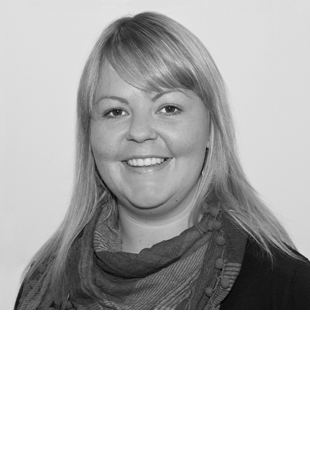Funders and INGOs, it’s time to move beyond the story of local “incompetence” towards mutuality and respect
03 Apr 2020
If you are like me and work in the NGO space in Africa, you have probably heard it all. You have heard about the incompetence of African non-profits and how they fail to comply with the most basic and simplest of guidelines. You have also heard how they are challenged in accessing large pools of funding as a direct result of incompetence. If you are like me (which most people working in the space are) talk of ineptitude, lack of creativity and innovation in non-profits on the continent is more than water cooler talk. It is a narrative that defines and dictates how you do your work on a daily basis and if you are like me, which most likely you are, you are sick of it all and have either capitulated or have come up with ways to cope.

Mbao Ngula, Executive Director of Project Educate in Zambia
I am struck by those obsessed with the “failures” of indigenous non-profit organisations. It often seems lost on these critics that International Non-Governmental Organizations (INGOs) and the donor community as a whole go to local communities with preconceived ideas and notions of what the challenges and therefore solutions are. They are often eager to “invest” money and expertise at the perceived challenges and are quickly disgruntled when their money and solutions do little or nothing to mitigate challenges and meet their expected results. It is at this juncture that we often hear of the incompetence of local communities and their lack of comprehension of the challenges in their own communities. Because foreign interests have the money, the assumption is that they should dictate where and how it is spent; a reasonable enough assumption until one begins to consider these interests do not always have it right from the get go. It then becomes an archaic and extraneous practice requiring considerable adjustment.
While oversight is important and necessary, it must never overshadow the need for local stakeholder engagement in the identification of challenges as well as the design and implementation of interventions. Developmental projects must be designed around challenges and not around money, otherwise development work is left to the whims of donors and funders, who often do not live in these communities and as a result do not always have a full grasp of the challenges and the contexts in which they exist. It is a practice that has had long term effects on the efficacy of aid in developing communities around the world.
You may or may not have wondered why it is harder for indigenous non-profits to raise the funds needed to support programming. They are after all the ones in the community and hence have a better understanding of the challenges. Consider also that while they implement a considerable amount of the work, local non-profit organisations get pennies on the dollar for every aid dollar given and have to scrape to meet basics, while their counterparts seem to have endless reserves to support even the most mundane and unnecessary tasks. Increasingly, donors are refusing to cover administrative costs for projects. Meanwhile, estimates are that for every dollar American tax payers give, an estimated 70% never leaves America’s shores and instead goes to cover the same costs for the large International Non-Governmental Organisations. As it turns out, the INGOs have all manner of staff who, often never set foot in the communities they operate, save for monitoring and evaluation visits once or twice a year peppered with excursions to the local tourist attractions. One of the most baffling strategies to come out of the donor community is funding opportunities that require NGOs to advance the money for advertised projects and then get reimbursed after implementation. The practice prompts one to ask, why would NGOs apply for funding if they already had the funds? It is a strategy that effectively ensures the majority of indigenous NGOs are disqualified. How many local NGOs have enough excess funds to cover implementation costs for work they have to apply for funding for to implement? Consider also that project funding is rarely unrestricted and this can only be spent for the purpose for which it was applied and approved for. Having excess funds and later on funds an NGO can reallocate is extremely rare, especially for small and medium NGOs who live from one grant to the next with funding gaps in between.
Another practice by INGOs is to setup parallel structures with the same goals and objectives as local organisations. While there is no denying the greatness of need for any one intervention in any one community on the continent, perhaps it’s worth considering identifying local partners with similar goals and objectives and building the capacity of these organisations to bring about change. Parallel structures tend to undermine local organisations by not only depriving them of funding and capacity building support. Parallel structures also tend to negate the fact that change must be locally driven in order to be effective, relevant and sustainable. It’s not a pretty picture, neither is it a simple one. However, increasingly donors, especially small and medium ones, are willing to be more flexible with their guidelines to accommodate NGOs in order to achieve the desired results. Working together to create a relationship that is meaningful and in the interest of those it is designed to serve. What is clear is that the donor – NGO relationship must be one that is mutually beneficial; allowing for both sides to make relevant contributions to development. It is one that must also be based on mutual respect, appreciating that each side is an equal player. Above all, there has to be a realization and an appreciation that locals have a unique grasp of local challenges and therefore must be included at all areas of a project cycle.
What it should not be is a tool for undermining or negating the role and importance of one or the other, especially that of local buy-in. It must also be appreciated that the money should follow the challenges and not the other way round, if aid is to have lasting long term effects on development. Community-led development has the potential to create viable solutions to developmental challenges and must be given a fair chance to do so by fostering a symbiotic relationship between challenges and money, between implementers and funders. To achieve this, there is a need for new models that are both equitable and relevant. Stakeholders must understand and appreciate their respective roles. Implementers want access to the funds that make their work possible and bring about change. Donors seek responsible partners on the ground with knowledge and expertise to implement innovative solutions to some of the world’s biggest challenges. It is possible to work together in the interest of development. If donor funding is to be effective, its use must not start with donor led call for proposals but community identification of challenges. The money should follow the challenges and not the other way round.
Mbao Ngula, Executive Director of Project Educate in Zambia. This article was first published in the Zambian Governance Foundation’s “Newsflash.”


This hits the nail on the head – INGOs should be serving the communities they purport to help, not making them dance to a western tune. Beautifully and succinctly put, this deserves wide circulation.
Project financing models like cost reimbursable model has promoted a lot of sharp practices among CBOs in utilization of funds to final end users. Nice article.
I’m pleased the model “has promoted a lot of sharp practices among CBOs in utilization of funds to final end users.” Unfortunately , It’s a deterrent to access to funding for resource starved community based organization serving the same communities the funds are intended for.
I couldn’t agree more with you, well put.
Exactly. Project interventions should be community driven. Communities should be able to identify gaps or challenges and priorities them before the donor comes in.
Well said Madam Mbao Ngula. A story of our struggles indeed.
I watched malicious agents of a UN agency sabotage our operation and tear my organisation apart from the inside just to convince their superiors that they should do direct implementation while allowing a new INGO (that UN agency’s biggest partner globally) space to set up in Guyana.
I’m sorry to hear of your experience. Whether it’s someone coming in to assist on a project, staff or entities being completely unprofessional, immoral and unethical, local organizations are falling prey to unscrupulous characters across the Continent. If they are not “investors”, they are journalists or even volunteers. Before you know it, parallel structures are set up to implement the same work they were called in to assist with. We are not supposed to say anything or complain as if we are being done a favor. African Countries should have some database of the offenders. It can be used to… Read more »